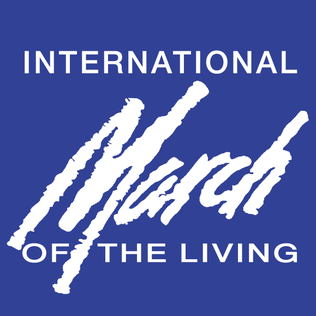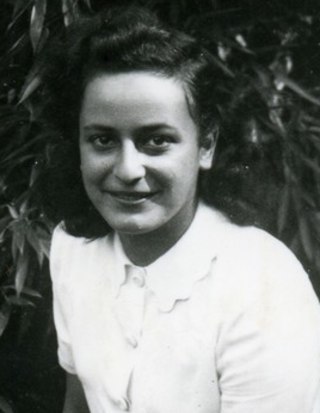
Nazi Germany used six extermination camps, also called death camps, or killing centers, in Central Europe, primarily Occupied Poland, during World War II to systematically murder over 2.7 million people – mostly Jews – in the Holocaust. The victims of death camps were primarily murdered by gassing, either in permanent installations constructed for this specific purpose, or by means of gas vans. The six extermination camps were Chełmno, Belzec, Sobibor, Treblinka, Majdanek and Auschwitz-Birkenau. Extermination through labour was also used at the Auschwitz and Majdanek death camps. Millions were also murdered in concentration camps, in the Aktion T4, or directly on site.
This is a selected bibliography and other resources for The Holocaust, including prominent primary sources, historical studies, notable survivor accounts and autobiographies, as well as other documentation and further hypotheses.

The March of the Living is an annual educational program which brings students from around the world to Poland, where they explore the remnants of the Holocaust. On Holocaust Memorial Day observed in the Jewish calendar, thousands of participants march silently from Auschwitz to Birkenau.

Nazi exploitation is a subgenre of exploitation film and sexploitation film that involves Nazis committing sex crimes, often as camp or prison overseers during World War II. Most follow the women in prison formula, only relocated to a concentration camp, extermination camp, or Nazi brothel, and with an added emphasis on sadism, gore, and degradation. The most infamous and influential title is a Canadian production, Ilsa, She Wolf of the SS (1974). Its surprise success and that of Salon Kitty and The Night Porter led European filmmakers, mostly in Italy, to produce similar films, with just over a dozen being released over the next few years. Globally exported to both cinema and VHS, the films were critically attacked and heavily censored, and the sub-genre all but vanished by the end of the seventies.
A kapo was one of prisoner functionaries, a prisoner in a Nazi camp who was assigned by the SS guards to supervise forced labor or carry out administrative tasks.

Muselmann was a term used amongst prisoners of German Nazi concentration camps during the Holocaust of World War II to refer to those suffering from a combination of starvation and exhaustion, as well as those who were resigned to their impending death. The Muselmann prisoners exhibited severe emaciation and physical weakness, an apathetic listlessness regarding their own fate, and unresponsiveness to their surroundings owing to their barbaric treatment.
Holocaust victims were people targeted by the government of Nazi Germany based on their ethnicity, religion, political beliefs, disability or sexual orientation. The institutionalized practice by the Nazis of singling out and persecuting people resulted in the Holocaust, which began with legalized social discrimination against specific groups, involuntary hospitalization, euthanasia, and forced sterilization of persons considered physically or mentally unfit for society. The vast majority of the Nazi regime's victims were Jews, Sinti-Roma peoples, and Slavs but victims also encompassed people identified as social outsiders in the Nazi worldview, such as homosexuals, and political enemies. Nazi persecution escalated during World War II and included: non-judicial incarceration, confiscation of property, forced labor, sexual slavery, death through overwork, human experimentation, undernourishment, and execution through a variety of methods. For specified groups like the Jews, genocide was the Nazis' primary goal.

Ronit Lentin is an Israeli/Irish political sociologist and a writer of fiction and non-fiction books.

Holocaust trains were railway transports run by the Deutsche Reichsbahn and other European railways under the control of Nazi Germany and its allies, for the purpose of forcible deportation of the Jews, as well as other victims of the Holocaust, to the Nazi concentration, forced labour, and extermination camps.

Gisella Perl was a Hungarian Jewish gynecologist deported to Auschwitz concentration camp in 1944, where she helped hundreds of women, serving as an inmate gynecologist for them. She worked without the bare necessities for practicing medicine. Perl survived the Holocaust, emigrated to New York, and was one of the first women to publicize the Holocaust experience in English, in her 1948 memoir I Was a Doctor in Auschwitz. She became a specialist in infertility treatment at Mount Sinai Hospital, New York and eventually moved with her daughter to live in Herzliya, Israel, where she died.
Joy Division was an English post-punk band, active 1976 to 1980, which took its name from the novel House of Dolls.

Hélène Berr was a French Jewish woman, who documented her life in a diary during the time of Nazi occupation of France. In France she is considered to be a "French Anne Frank". She died from typhus during an epidemic of the disease in Bergen-Belsen concentration camp that also killed Anne Frank and her sister Margot.

Yehiel De-Nur, also known by his pen name Ka-Tsetnik 135633, born Yehiel Feiner, was a Jewish writer and Holocaust survivor, whose books were inspired by his time as a prisoner in the Auschwitz concentration camp.

Military brothels were set up by Nazi Germany during World War II throughout much of occupied Europe for the use of Wehrmacht and SS soldiers. These brothels were generally new creations, but in the west, they were sometimes expansions of pre-existing brothels and other buildings. Until 1942, there were around 500 military brothels of this kind in German-occupied Europe, serving travelling soldiers and those withdrawn from the front. According to records, a minimum of 34,140 European women were forced to serve as prostitutes during the German occupation of their own countries along with female prisoners of concentration camp brothels. In many cases in Eastern Europe, teenage girls and women were kidnapped on the streets of occupied cities during German military and police round ups called łapanka in Polish or rafle in French.

In World War II, Nazi Germany established brothels in the concentration camps to increase productivity among inmates. Their use was restricted to the more privileged Aryan prisoners, primarily the Kapos, or "prisoner functionaries", and the criminal element. Jewish inmates were prohibited from using the brothels according to rules against racial mixing. In the end, the camp brothels did not produce any noticeable increase in the prisoners' productivity levels but, instead, created a market for coupons among the more privileged camp prisoners.

Nava Semel was an Israeli author, playwright, screenwriter and translator. Her short story collection Kova Zekhukhit was the first work of fiction published in Israel to address the topic of the "Second Generation"—children of Holocaust survivors.

Chamber of the Holocaust is a small Holocaust museum located on Mount Zion in Jerusalem, Israel. It was Israel's first Holocaust museum.
Elizabeth Ester Jaranyi was a survivor of Nazi concentration camps during the Holocaust and the memorist of The Flowers From My Mother's Garden.
During World War II, Jewish men and women in concentration camps faced sexual violence, due to the wartime discrimination, antisemitism, and genocidal beliefs held by Adolf Hitler's Nazi Regime. This sexual violence and discrimination happened throughout Nazi-occupied Europe, including in Jewish people's homes and hiding spaces as well as in public and at designated killing sites.













